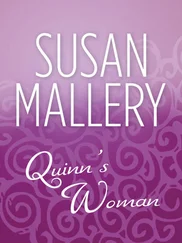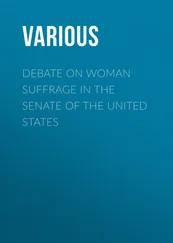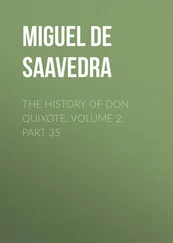Sarah Josepha Hale established a ladies' magazine in Boston in 1827, which she afterward removed to Philadelphia, there associating with herself Louis Godey, and assuming the editorship of Godey's Lady's Book . This magazine was followed by many others, of which Mrs. Kirkland, Mrs. Osgood, Mrs. Ellet, Mrs. Sigourney, and women of like character were editors or contributors. These early magazines published many steel and colored engravings, not only of fashions, but reproductions of works of art, giving the first important impulse to the art of engraving in this country.
Many other periodicals and papers by women now appeared over the country. Mrs. Anne Royal edited for a quarter of a century a paper called The Huntress . In 1827 Lydia Maria Child published a paper for children called The Juvenile Miscellany , and in 1841 assumed the editorship of The Anti-Slavery Standard , in New York, which she ably conducted for eight years. The Dial , in Boston, a transcendental quarterly, edited by Margaret Fuller, made its appearance in 1840; its contributors, among whom were Ralph Waldo Emerson, Bronson Alcott, Theodore Parker, Wm. H. Channing, and the nature-loving Thoreau, were some of the most profound thinkers of the time. Charlotte Fowler Wells, the efficient coadjutor of her brothers and husband for the last forty-two years in the management of The Phrenological Journal and Publishing House of Fowler & Wells in New York city, and since her husband's death in 1875 the sole proprietor and general manager, has also conducted an extensive correspondence and written occasional articles for the Journal. The Lowell Offering , edited by the "mill girls" of that manufacturing town, was established in 1840, and exercised a wide influence. It lived till 1849. Its articles were entirely written by the girl operatives, among whom may be mentioned Lucy Larcom, Margaret Foley, the sculptor, who recently died in Rome; Lydia S. Hall, who at one time filled an important clerkship in the United States Treasury, and Harriet J. Hansan, afterward the wife of W. S. Robinson (Warrington), and herself one of the present workers in Woman Suffrage. Harriet F. Curtis, author of two popular novels, and Harriet Farley, both "mill girls," had entire editorial charge during the latter part of its existence. In Vermont, Clarina Howard Nichols edited the Windham County Democrat from 1843 to 1853. It was a political paper of a pronounced character; her husband was the publisher. Jane G. Swisshelm edited The Saturday Visitor , at Pittsburg, Pa., in 1848. Also the same year The True Kindred appeared, by Rebecca Sanford, at Akron, Ohio. The Lily , a temperance monthly, was started in Seneca Falls, N. Y., in 1849, by Amelia Bloomer, as editor and publisher. It also advocated Woman's Rights, and attained a circulation in nearly every State and Territory of the Union. The Sybil soon followed, Dr. Lydia Sayre Hasbrook, editor; also The Pledge of Honor , edited by N. M. Baker and E. Maria Sheldon, Adrian, Michigan.
In 1849, Die Frauen Zeitung , edited by Mathilde Franceska Anneke, was published in Milwaukee, Wisconsin. In 1850, Lydia Jane Pierson edited a column of the Lancaster (Pa.) Gazette ; Mrs. Prewett edited the Yazoo (Miss.) Whig , in Mississippi; and Mrs. Sheldon the Dollar Weekly . In 1851, Julia Ward Howe edited, with her husband, The Commonwealth , a newspaper dedicated to free thought, and zealous for the liberty of the slave. In 1851, Mrs. C. C. Bentley was editor of the Concord Free Press , in Vermont, and Elizabeth Aldrich of the Genius of Liberty , in Ohio. In 1852, Anna W. Spencer started the Pioneer and Woman's Advocate , in Providence, R. I. Its motto was, "Liberty, Truth, Temperance, Equality." It was published semi-monthly, and advocated a better education for woman, a higher price for her labor, the opening of new industries. It was the earliest paper established in the United States for the advocacy of Woman's Rights. In 1853, The Una , a paper devoted to the enfranchisement of woman, owned and edited by Paulina Wright Davis, was first published in Providence, but afterward removed to Boston, where Caroline H. Dall became associate editor. In 1855, Anna McDowell founded The Woman's Advocate in Philadelphia, a paper in which, like that of Mrs. Anna Franklin, the owner, editor, and compositors were all women. About this period many well-known literary women filled editorial chairs. Grace Greenwood started a child's paper called The Little Pilgrim ; Mrs. Bailey conducted the Era , an anti-slavery paper, in Washington, D. C., after her husband's death.
In 1868, The Revolution , a pronounced Woman's Rights paper, was started in New York city; Susan B. Anthony, publisher and proprietor, Elizabeth Cady Stanton and Parker Pillsbury, editors. Its motto, "Principles, not policy; justice, not favor; men, their rights and nothing more; women, their rights and nothing less." In 1870 it passed into the hands of Laura Curtis Bullard, who edited it two years with the assistance of Phebe Carey and Augusta Larned, and in 1872 it found consecrated burial in The Liberal Christian , the leading Unitarian paper in New York. From the advent of The Revolution can be dated a new era in the woman suffrage movement. Its brilliant, aggressive columns attracted the comments of the press, and drew the attention of the country to the reform so ably advocated. Many other papers devoted to the discussion of woman's enfranchisement soon arose. In 1869, The Pioneer , in San Francisco, Cal., Emily Pitts Stevens, editor and proprietor. The Woman's Advocate , at Dayton, O., A. J. Boyer and Miriam M. Cole, editors, started the same year. The Sorosis and The Agitator , in Chicago, Ill., the latter owned and edited by Mary A. Livermore, and The Woman's Advocate , in New York, were all alike short-lived. L'Amérique , a semi-weekly French paper published in Chicago, Ill., by Madam Jennie d'Héricourt, and Die Neue Zeit , a German paper, in New York, by Mathilde F. Wendt, this same year, show the interest of our foreign women citizens in the cause of their sex. In 1870, The Woman's Journal was founded in Boston, Lucy Stone, Julia Ward Howe, and Henry B. Blackwell, editors. Woodhull and Claflin's Weekly , an erratic paper, advocating many new ideas, was established in New York by Victoria Woodhull and Tennie C. Claflin, editors and proprietors. The New Northwest , in Portland, Oregon, in 1871, Abigail Scott Duniway, editor and proprietor. The Golden Dawn , at San Francisco, Cal., in 1876, Mrs. Boyer, editor.
The Ballot-Box was started in 1876, at Toledo, O., Sarah Langdon Williams, editor, under the auspices of the city Woman's Suffrage Association. It was moved to Syracuse in 1878, and is now edited by Matilda Joslyn Gage, under the name of The National Citizen and Ballot-Box , as an exponent of the views of the National Woman Suffrage Association. Its motto, "Self-government is a natural right, and the ballot is the method of exercising that right." Laura de Force Gordon for some years edited a daily democratic paper in California. In opposition to this large array of papers demanding equality for woman, a solitary little monthly was started a few years since, in Baltimore, Md., under the auspices of Mrs. General Sherman and Mrs. Admiral Dahlgren. It was called The True Woman , but soon died of inanition and inherent weakness of constitution.
In the Exposition of 1876, in Philadelphia, the New Century , edited and published under the auspices of the Woman's Centennial Committee, was made-up and printed by women on a press of their own, in the Woman's Pavilion. In 1877 Mrs. Theresa Lewis started Woman's Words in Philadelphia. For some time, Penfield, N. Y., boasted its thirteen-year-old girl editor, in Miss Nellie Williams. Her paper, the Penfield Enterprise , was for three years written, set up, and published by herself. It attained a circulation of three thousand.
Читать дальше












